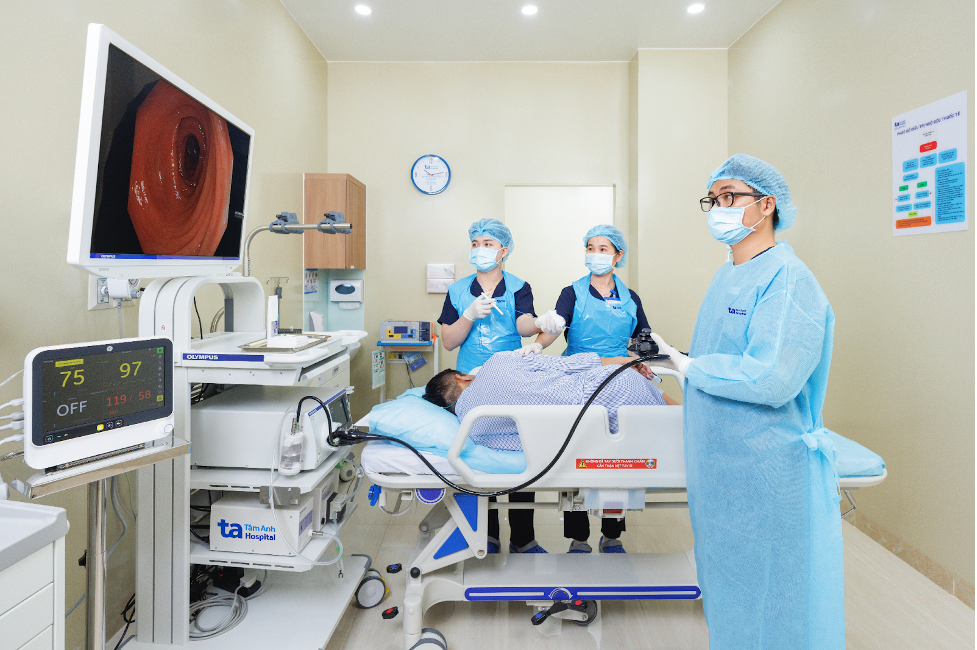Answer:
Abdominal ultrasound uses sound waves to visualize organs like the liver, gallbladder, pancreas, spleen, kidneys, and bladder. While it can sometimes indirectly suggest colorectal cancer – for instance, if a tumor is large, invasive, or has spread to the liver or lymph nodes – it's not ideal for screening or diagnosis. Small, early-stage tumors, or those deep within the colon, are difficult to detect with ultrasound.
 |
Doctor Duy performing a colonoscopy. Photo: Tam Anh General Clinic, District 7 |
Doctor Duy performing a colonoscopy. Photo: Tam Anh General Clinic, District 7
Other imaging techniques, like CT and MRI scans of the abdomen and pelvis, can help detect colon tumors. However, colonoscopy remains the most effective method, especially for small, early-stage cancers. A colonoscopy involves inserting a thin, flexible tube with a tiny camera through the rectum to examine the entire colon.
High-magnification colonoscopes allow doctors to easily identify lesions, tumors, polyps, cancerous tissue, and precancerous growths. During the procedure, doctors can also take biopsies for diagnosis, remove polyps, or even excise small tumors. This is something other imaging techniques can't do.
If your father experiences persistent constipation, rectal bleeding, weight loss, or appetite loss, take him to a gastroenterologist for a proper examination, diagnosis, and treatment plan.
Master, Doctor Tran Thuong Duy
Gastrointestinal Endoscopy Unit
Tam Anh General Clinic, District 7
| Readers can submit questions about digestive diseases here for doctors to answer. |












